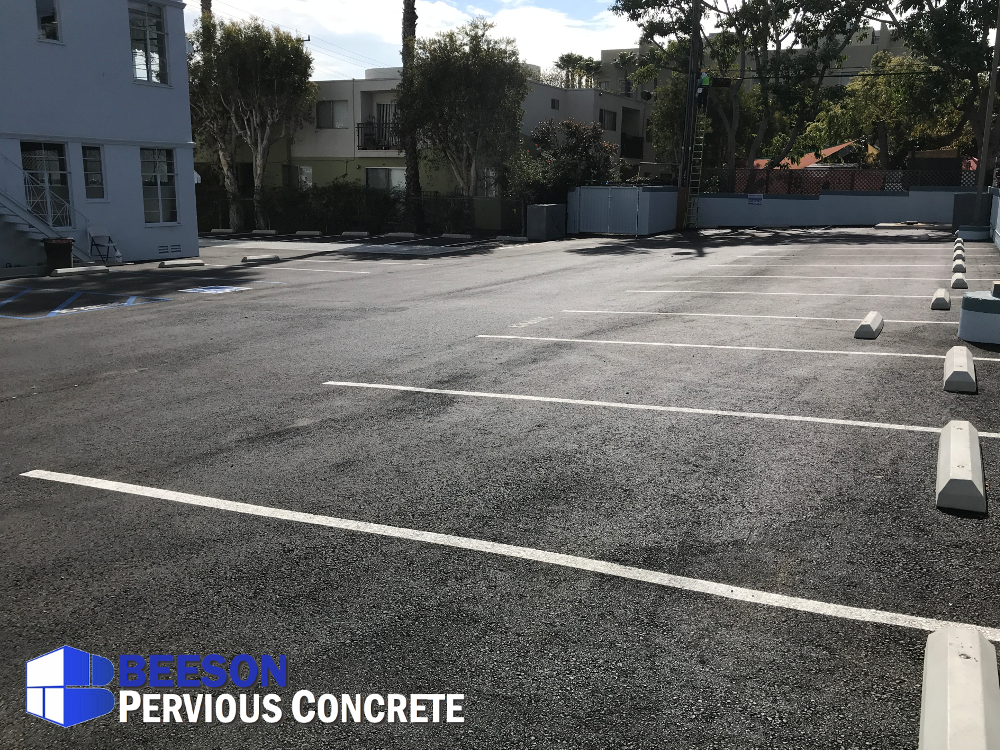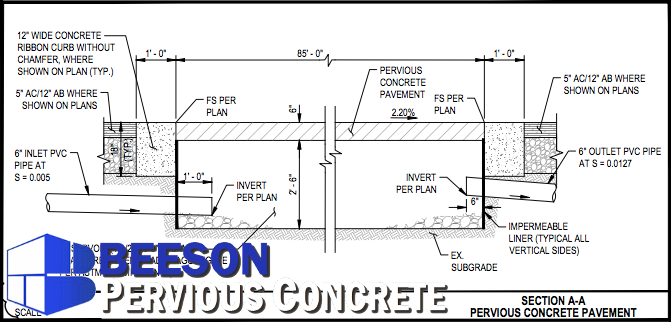Detention + Parking with Pervious Concrete
/LID at its finest - a doctor's office in Santa Monica is having their parking lot do double duty by placing pervious concrete atop a gravel detention bed. The pervious pavement system is infiltrating surface flow from the lot as well as adjacent roof runoff, piped in underground. As you can see in the first photos, the asphalt parking lot is sloped to the pervious.
What you can't see is that they are piping in adjacent roof runoff underneath, using a detail similar to this one:
While directing surface flow from asphalt to pervious concrete is not necessarily the best design choice* it does do the job well of meeting LID requirements and the value requirements of the project. *The reason why it is not the best design choice is because the asphalt tends to clog the pervious over time. Sticky fines from the asphalt migrate in the surface flow to the pervious concrete which filters them out. Sticky asphalt fines are not possible to remove from pervious concrete so end up slowly encroaching on the pervious, reducing the available infiltration surface. Depending on the local rain fall, the frequency of asphalt resurfacing and the slope of the asphalt/speed of the surface flow it can very well take years if not decades to meaningfully impact the infiltration rate of the pervious concrete.







